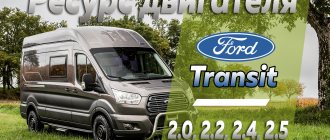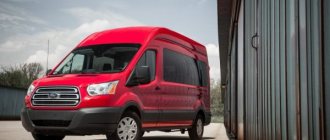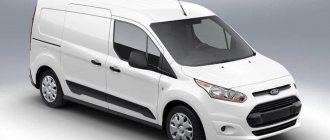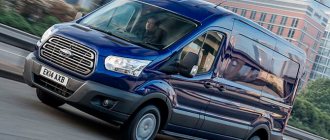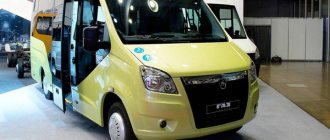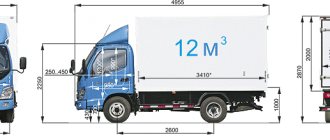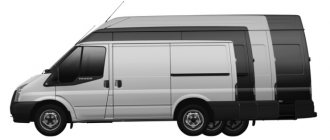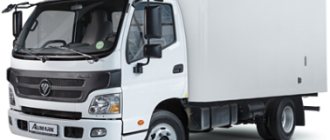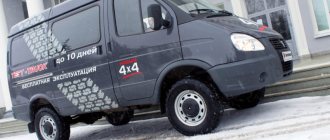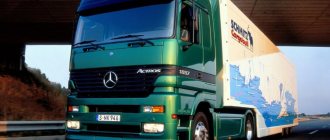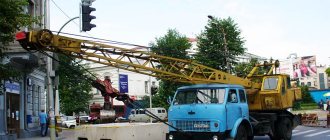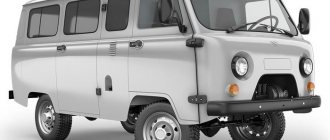Payment for goods and downloading of the book in electronic form (PDF format) is made on the website.
To do this, you need to find the book you are interested in and click on the “Buy” button. The price of the book is indicated on the button.
For convenience, the price on the website for residents of Russia, Belarus and Kazakhstan is presented in rubles.
For residents of Ukraine in hryvnias, and for all other countries - dollars.
After clicking on the “BUY” button, a payment window will open where you can select a payment system with which you can pay for the selected book using any bank card (Visa, MasterCard, MIR, etc.)
When you click on the “Pay by bank card” button, the Portmone payment system will open, which is the easiest way to make a payment.
In addition, the website offers four payment systems for payment:
- Yandex (payment from any bank cards, Yandex Money account, QIWI Wallet, terminals, etc.);
- Portmone (payment from any bank cards, Portmone account);
- PayPal (payment from any bank cards, PayPal account);
- WebMoney (payment from any bank cards, payment from WebMoney wallets).
Payment via Yandex Cashier
After selecting payment via Yandex, the Yandex Cashier payment system will launch, where you need to select a convenient payment method (bank card, QIWI, Yandex Money account, etc.)
After specifying payment details and confirming payment, payment for the goods will occur.
If you have a bank card in a currency other than the ruble, then the money will be debited from the card at the rate of the Central Bank of Russia at the time of the purchase.
This payment method is optimal for residents of Russia, Kazakhstan and Belarus.
Official website of the Yandex Kassa payment system https://kassa.yandex.ru
Payment via Portmone
After selecting payment through Portmone, the payment system will launch, where you need to select the payment method: bank card or Portmone account.
The price in the Portmone payment system is converted into dollars at the exchange rate of the Central Bank of the country where you are located.
If you have a bank card in a currency other than the dollar, then the money will be debited from the card at the rate of the Central Bank of your country at the time of the purchase.
After specifying payment details and confirming payment, payment for the goods will occur.
Official website of the Portmone payment system https://www.portmone.com
The history of the famous Ford Transit
What is Transit hiding?
Alexander Klimnov
The history of the famous Ford Transit, which has become one of the most common light commercial models of the Old World, goes back four and a half decades.
The first generation of Transit, a kind of “proto-Transit”, is considered to be the Taunus Transit 800-1500 family of carriages, model 1961, produced by the West German branch of Ford-Werke in Cologne. In turn, this model is only a modernization of the early FK1000 model from 1953 (in total, 278.2 thousand “carriages” were produced in 1953–1965), very similar in appearance to the early Volkswagen Transporter Typ2 T1. This is not surprising, because both models, which actually created the European class of carriage-type delivery vans, had the same creator - engineer Alfred Hasner, who moved from VW AG to Ford-Werke. It is believed that another immediate predecessor of the legendary model was the Ford Thames wagon layout, produced in 1953–1965. British subsidiary of Fordson.
It’s a paradox, but the Taunus Transit is officially considered the “zero” generation, although it is firmly entrenched in the minds as the first, which was due to the large sweeping “Transit” inscription on the front. "Taunus" was written in small letters just above the emblem.
One way or another, the proper name Transit began to be used only on the hooded model. It was developed in parallel in England and Germany, and a Ford-Europe division was specially created for production, uniting production units in Germany, Belgium, Great Britain and Portugal. Starting with the 1965 model, i.e. the second generation of Transit, it began to stand out among its competitors with fairly advanced technical solutions that made it easier to use and attractive to buyers. The second generation Transit, which debuted in December 1965 and was produced at factories in England and Belgium, featured for the first time a compact V4 petrol engine from the German passenger car model Taunus (1.2...1.7 l, 42...65 hp), lock -steering wheel lock, seat belts and a custom sliding side door to the interior, as well as a driver's door on the van version. The family included 6 basic versions and 15 modifications from FT600 to FT1750 with a carrying capacity from 0.62 to 1.75 tons, a wheelbase of 2.7 and 3 m and bodies such as an all-metal van, a glazed minibus with 8...15 seats, a pickup truck and its cargo-passenger double cab version. In 1969, the family received a dual-circuit brake system. The model redesigned in 1971 (from FT75 to FT175) received a new radiator grille with rounded corners (petrol version). A year later, the first version in the family with a four-cylinder diesel engine, first York (Perkins), and later Ford (2.4 liters, 62 hp), received the nickname “pig snout” for its radiator grille protruding 100 mm due to the longer engine. and "platypus". They began installing a metal side platform on the truck instead of a wooden one. Since 1974, the Transit family has been equipped on request with a Borg-Warner 3-speed hydromechanical automatic transmission. Since 1975, the radiator grille and bumpers have been painted black instead of white. In 1976, the Transit received front disc brakes. Until 1977, 487.7 thousand Transits were produced at the plant in Genk, Belgium, and about 700 thousand more in England.
In 1978, a restyling of the model (mainly the front end) followed, giving the Transit family (by the way, some consider this family the “third” generation of Transit) of 7 main versions from FT80 to FT190 a modern look due to the plastic lining of the radiator and bumpers, as well as rectangular headlights , including halogen ones. The body contours and ergonomics of the interior and cabin have not changed, including the very high step of the rear side door, although the instrument panel has been replaced with an angular plastic one with a printed circuit board. The model now features tubeless tires and leaf springs on the front suspension. In addition to the previous diesel engine, the family was equipped with in-line gasoline “fours” type B (1.6 liters, 65 hp and 2.0 liters, 78 hp), as well as a 100-horsepower 3-liter V6. In 1979, an all-wheel drive version of the 8-seater FT100 Allrad 4×4 minibus and a luxury touring Clubmobil appeared. In 1983, transistor ignition was introduced on petrol engines, and new rear lights on vans and minibuses. 6-seater Combi versions appeared. In 1984, the outdated swirl chamber diesel engine was replaced by a new 2.5-liter 68-horsepower direct injection engine, which reduced operating fuel consumption by 24%. In addition, the bumpers and instrument panel have been slightly changed. In early 1985, the 2 millionth Transit was produced. The second generation Transit car, although it came to our country only in used form, was deservedly considered a very durable, reliable and unpretentious model. Ford bonnets were especially common in the North-West region thanks to gray and black imports from Finland and other Scandinavian countries, where this cheap model was very popular.
In 1986, for the production of the completely new third generation Transit, factories in the UK and Belgium were reconstructed, and a new modern plant was built in Portugal. The new model with a cabover layout saved up to 8% of fuel only due to more advanced aerodynamics (Cx=0.37) of the front end. It received voluminous polypropylene bumpers, independent McPherson-type front suspension and rack and pinion steering (on light versions), a plastic tank and several wheelbase options from 2815 to 3472 mm. The Transit was equipped with carburetor 1.6 and 2-liter gasoline “fours” (63 and 78 hp) and a previously developed 2.5-liter diesel engine, with which a 5-speed manual gearbox or a 4-speed “automatic” was installed. In total, the family included over 30 basic models from FT60 to FT190 with a carrying capacity from 0.8 to 1.9 tons and a van capacity from 6.0 to 10 m3. In 1989, new 2-liter gasoline engines appeared, including a 114-horsepower engine with EFI multipoint injection and a catalytic converter with a lambda probe. In 1991, the first 85- and 100-horsepower turbodiesels in the class appeared. Modernized in 1991, the model with a modified front end design made it possible to easily pass the frontal crash test at a speed of 48 km/h (at that time without partial transverse overlap). In the summer of 1994, the modernized passenger versions, which received a slightly redesigned front end and a new, more comfortable interior with a new instrument panel, improved ventilation and 70% more effective sound insulation, were renamed the Torneo model. This model was the first to feature inertial seat belts for all passengers, airbags for the driver and optionally for the front passenger, as well as ABS. The modernized Transit family has been expanded to 170 modifications from FT80 to FT230 with a gross weight from 2.8 to 4.0 tons, including even light truck tractors with rear air suspension. The volume of vans increased to 16 m3. This generation of Transit is still very common on the roads of the European part of the country and is popular due to its fairly simple, reliable and maintainable design and economical diesel engines. In September 1994, the 3 millionth Transit rolled off the production line. Since 1993, the model began to be assembled in Turkey at the Otosan plant in the city of Kocayel. In addition, Transit III was assembled in 1995–2000. in the Polish city of Plonsk and in 1996–1998. in the Belarusian city of Obchak.
In 2000, the fourth generation Transit (from FT260 to FT350) began to roll off the assembly line of the Genk plant, with both traditional rear-wheel drive and low-floor front-wheel drive layouts. The designers achieved 95% unification of the platforms, and the roof panel of the most extended van versions was considered the largest single-stamped body part in the world. The family was equipped with a new range of low-emission engines, including diesel engines with the Common Rail system: 2.2 l, 85...110 hp. - for front-wheel drive versions and 2.4 liters for heavier rear-wheel drive ones. In 2001, the Ford Transit IV was awarded the honorary title of “Best Van of 2001” and its production was launched at the Otosan plant in Kocaeli, Turkey (it was curtailed in Belgium). In 2005, the 5 millionth Transit was produced.
At the beginning of 2006, a restyled Transit appeared with a completely redesigned front end, a new interior and significantly modernized chassis and power units that now comply with Euro 4 standards. Transit production is now concentrated almost exclusively in Kocaeli, Turkey (only “right-hand drive” Transits are still assembled in England ), from where Transit is exported throughout the Eastern Hemisphere.
There is no doubt that Transit will continue its difficult service for the benefit of people in the 21st century.
Payment via PayPal
After selecting payment via PayPal, the PayPal payment system will launch, where you need to select the payment method: bank card or PayPal account.
If you already have a PayPal account, then you need to log into it and make a payment.
If you do not have a PayPal account and you want to pay using a bank card via PayPal, you need to click on the “Create an Account” button - shown with an arrow in the picture.
PayPal will then prompt you to select your country and provide your credit card information.
After specifying the information required to make the payment, you must click on the “Pay Now” button.
Official website of the PayPal payment system https://www.paypal.com
Payment via WebMoney
After selecting payment via WebMoney, the payment system will launch, where you need to select the payment method: bank card or WebMoney wallet.
If you already have a WebMoney wallet, then you need to log into it and make a payment.
If you do not have a WebMoney wallet and you want to pay in another way, you need to select any of the methods that WebMoney offers and make the payment
After specifying payment details and confirming payment, payment for the goods will occur.
Official website of the WebMoney payment system https://www.webmoney.ru/
Downloading a book
After successfully completing the payment (by any method) and returning to the KrutilVertel store from the payment system website, you will be taken to the successful payment page:
On this page you need to indicate your e-mail, where access to download the book will be sent.
If you are already registered on our website, then simply follow the link to your personal account.
The book you purchased will be in your personal account, from where you can always download it.
Please note that after making the payment, you need to return back from the payment system website to the KrutilVertel website.
If for some reason you did not return back to the site and closed the payment system tab with a message about the successful completion of the payment, please let us know - we will send you a letter indicating access to download the book.
Ford Transit 1978-1986 Service and Repair Manual
How to Use This Manual The service station manual provides information on service and repair procedures. This guide is divided into groups and sections. Sections devoted to special systems are collected together in the corresponding group. The group is dedicated to a specific part of the car. This manual is divided into five groups: General Information, Chassis, Powertrain, Electrical Equipment, Body and Paintwork. The group number is the first digit of the section number. The pages at the beginning of this manual list all available sections. Each section has a list that reveals the contents of the chapters “General Specifications”, “Description and Principle of Operation” and “Service Adjustments and Checks”. If elements need to be removed or disassembled in a particular sequence, they will be indicated by corresponding numbers in the illustration, and the accompanying text will be numbered accordingly (refer to the chapter "Examples"). All references to the left or right side related to the vehicle are determined by the position of the driver sitting in the seat and looking forward. All left or right side references relating to the engine are determined by the direction from the flywheel to the front camshaft pulley. Instructions on using the WDS, FDS2000, or STAR Next Generation Diagnostic Tester (NGS) will be provided as needed.
Inspection and Testing Visual inspection charts, symptom charts, and other information charts (such as charts containing diagnostic programs), additional test procedures with technical specifications, or referral of a technician to a special test procedure. Symptoms Chart The Symptoms Chart identifies the symptoms of the problem, the cause of the problem, and the steps required to find the cause. Pinpoint Tests When diagnosing electrical systems, Pinpoint tests are used to determine the source of the problem. Testing is performed in a logical, step-by-step sequence. Pinpoint tests are divided into two columns: “CONDITIONS” and “DETAILS/RESULTS/ACTIONS”. The "CONDITIONS" column is used solely for graphical information and icons (with or without labels), and the "DETAILS/RESULTS/ACTIONS" column directs the technician to another inspection point or describes special corrective actions based on the results of the inspection performed. The numbers within the frames indicate the sequence in which the described actions should be performed.
Element Checks Element checks are performed when an element is tested in complex/compound pinpoint tests, or when the procedure is too complex to fit into a single pinpoint test page. Graphics Graphics illustrate a measurement or test that should be performed as part of a given test item. For voltmeters and ohmmeters, the tester image is used. If one graphic relates to multiple measurements, the test leads are first shown as a solid line and then, starting from the point where the wires are separated to illustrate the individual measurements, they are shown as a broken line. The splitter box/testers are represented by a test pin in a double circle. Test pins are marked with a pin number. Examples Special Tools and Torque Values Any need to use a special tool will be indicated by a drawing showing how to use the tool and indicating the tool number. Torque values will be given at the appropriate place in the procedure description.
Carburettor In addition to the main jet system the carburettor also utilises an accelerator pump which injects a small quantity of fuel into the venturi to ensure a smooth and rapid transition from the idling to the main system. A vacuum operated power valve provides additional enrichment when the engine is operating at high loads. An important feature of this carburettor is the “Sonic by pass” idle system. This is designed to provide improved control of air/fuel mixture and consequently reduce CO emissions at idle and small throttle openings. Consequently the mixture screw will not normally require adjustment and idle adjustment can be confined to the idle speed screw. If at PDI the idle quality is poor CO meters should not be used and mixture should be adjusted at 50 rpm below the optimum speed. Replacement plugs which have to be fitted in the event that any adjustment should be necessary are available to authorized workshops only. Fitted to most carburettors is an idle mixture shut off valve mounted into the carburettor idle gallery. When the ignition is switched off a plunger is pushed into the idle gallery, blocking the flow of fuel through the idle system. This prevents the engine from dieseling.
vnx.su
Problems when paying with bank cards
Sometimes difficulties may arise when paying with Visa/MasterCard bank cards. The most common of them:
- There is a restriction on the card for paying for online purchases
- A plastic card is not intended for making payments online.
- The plastic card is not activated for making payments online.
- There are not enough funds on the plastic card.
In order to solve these problems, you need to call or write to the technical support of the bank where you are served. Bank specialists will help you resolve them and make payments.
That's basically it. The entire process of paying for a book in PDF format on car repair on our website takes 1-2 minutes.
If you still have any questions, you can ask them using the feedback form, or write us an email at [email protected]
Ford Transit 86-00 operation, maintenance and repair manual
The manual contains general information about the design of Ford Transit vehicles, operating instructions, recommendations for maintenance, a description of possible malfunctions of the engine, transmission (manual and automatic), chassis, steering (including power steering), brake system (both with ABS , and without it), electrical equipment and body elements. The technical tips provided in this manual will help you carry out maintenance and repairs, both at a service station and on your own. The purpose of this manual is to provide maximum assistance to the car owner in operating and planning repairs both in a car service workshop and on their own. The information collected and provided below allows the car owner to decide what maintenance work should be carried out and when, and whether it makes sense to try to do it yourself, or whether to contact the manufacturer’s dealership or a car service center.
The manual includes a description of the procedures for mandatory routine maintenance of the vehicle and a schedule for their implementation. In addition, information is offered on diagnosing malfunctions of components and systems of the vehicle (in the event of their failure), as well as ways to eliminate their causes. The manual is divided into Chapters. Each Chapter is divided into Sections. The sections are in turn divided into subsections and consist of numbered paragraphs. The text is accompanied by explanatory illustrations. Each illustration is numbered in decimal numbers according to their positions in the Chapter, for example 5.1 is the first illustration in Section 5. References to the position of an assembly or component on the left or right are considered in relation to a person sitting in the driver's seat facing forward. Unless otherwise specified, nuts and bolts are loosened by turning counterclockwise and tightened clockwise. Once described in the text of the manual, procedures, in general, are no longer repeated. To perform the previously described procedures, reference is made in the text to the appropriate chapter and section of the manual.
ABOUT THE FORD TRANSIT CAR (DIESEL) The latest Ford Transit models were introduced in February 1986, this is the third generation of this popular car model. This manual covers models with a 2.5L diesel engine. The main difference of the new model is the wedge-shaped design of the front end, designed to improve aerodynamic properties. The 2.5 liter diesel engine has an overhead valve design, cast iron cylinder head and block and water cooling. There are engine modifications with conventional natural air suction, as well as turbocharged engines. In any case, the engine is single-row and, depending on the model, is mated to a 4- or 5-speed manual transmission or a 4-speed automatic transmission. Manual steering and Mac Pherson-type independent front suspension on short wheelbase (LCX) models, new Long wheelbase (LCY) models through 1992, continued to be produced with lug-nut steering, solid axle and leaf springs, which were used on earlier models.
Since 1992, all models began to be produced with rack and pinion steering and independent front suspension. On all models, double-acting telescopic shock absorbers are installed on the front and rear suspensions. Drive to the rear wheels is transmitted via a two- or three-piece driveshaft to the rear axle, which is suspended on each side by multiple leaf springs. All models are equipped with dual-circuit power brakes, front disc brakes and self-adjusting drum brakes at the rear. There are a huge number of variations of Transit body types from pickup truck to van. Bodies of all modifications and variants are mounted on a chassis with a long or short wheelbase.
